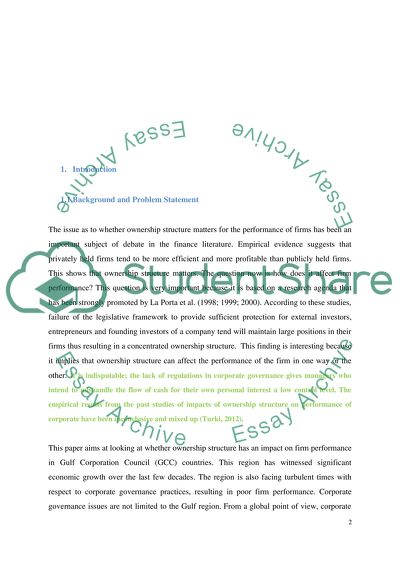Retrieved from https://studentshare.org/finance-accounting/1628632-ownership-structure-and-firm-performance-evidence-from-gcc-countries
https://studentshare.org/finance-accounting/1628632-ownership-structure-and-firm-performance-evidence-from-gcc-countries.


